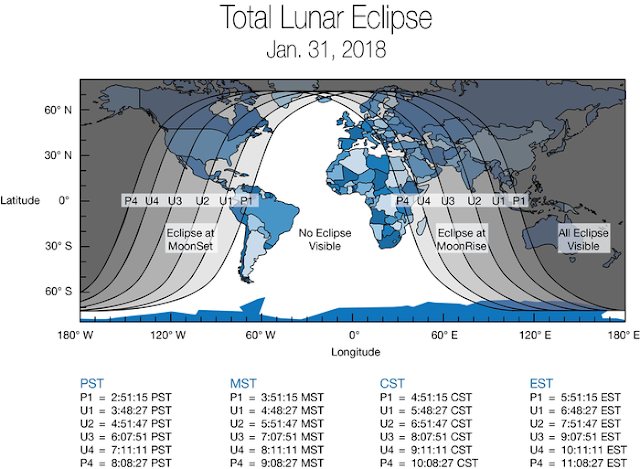How to Watch the Super Blue Blood Moon
Set your alarm clock – early Wednesday morning, there's a lunar event that hasn't been seen since 1866.
And it'll be at least partially visible in all 50 U.S. states – though the views will get better and better the farther west you live.
Let's break this down. This event – called a super blue blood moon – is actually three fairly common lunar happenings all happening at the same time.
And scientists say that information gathered during the event could help them figure out where to land a rover on the moon.
What's the best way to see it?
Everyone in the U.S. will be able to see at least some portion of the eclipse, with the best views in Western states.
On the East Coast, the eclipse will begin at 5:51 a.m. local time, but the moon will set before the end of the eclipse's totality. "The darker part of Earth's shadow will begin to blanket part of the Moon with a reddish tint at 6:48 a.m. EST, but the Moon will set less than a half-hour later," NASA says. For East Coasters, the best bet for good viewing will be at about 6:45 a.m. ET.
It'll be easier to see in the Central time zone because the moon will be higher in the sky when the eclipse begins. The red shadow will be observable by 6:15 a.m. ET. In Mountain time, the peak will be at around 6:30.
And lucky viewers in California and western Canada will see "the total eclipse phase from start to finish," NASA says. "At 4:51 a.m., totality will begin, with best viewing between about 5:00 and 6:00 a.m. local time. The totality phase ends about 6:05 a.m."
If you have a telescope, Day recommends bringing it out and checking out the moon's surface under the lunar eclipse's "red filter" and the supermoon's extra-close, extra-bright conditions.
Source: npr.org










Post a Comment